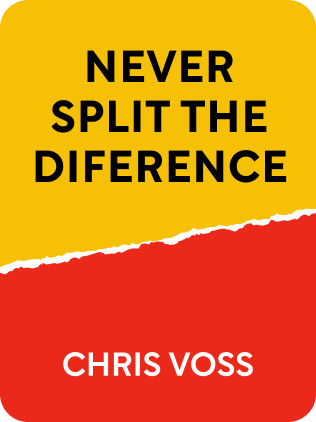

This article is an excerpt from the Shortform book guide to "Never Split the Difference" by Chris Voss and Tahl Raz. Shortform has the world's best summaries and analyses of books you should be reading.
Like this article? Sign up for a free trial here .
What are the main Never Split the Difference takeaways? How can you put his negotiation advice into practice?
We will cover the key takeaways from Never Split the Difference and how you can put them into practice. By mastering the techniques you’ve learned, you’ll have the skills and confidence to get what you want out of any negotiation.
Read on for the key Never Split the Difference takeaways to help you reinforce your understanding of the book’s main concepts, principles, and ideas.
Never Split the Difference: Key Takeaways
Practice Tactical Empathy: Tactical empathy is understanding someone else’s position in order to get what you want from them. It’s about recognizing their perspective and feelings and vocalizing it, in order to get what you want. You can practice tactical empathy by labeling your counterpart’s emotions and mirroring their word choice.
Conduct an Accusation Audit: You use an accusation audit when you label your counterpart’s negative emotions about you specifically by listing every bad thing they could say about you at the beginning of the negotiation, nipping it in the bud. This defuses the situation immediately and puts it all right out there in the open. You then ask for input based on that list, knowing that they’ll want to reassure you that you’re not as bad as you’ve portrayed yourself. Your accusation audit causes the other party to seek common ground.
Get Them to Say “No”: A lot of standard negotiating theory is premised on getting your counterpart to say “yes.” These theories see “no” as a barrier to be overcome. But this view has it backwards: you want your counterpart to say “no.” Why? Because by getting them to identify what they don’t want, you can get down to what they do want. And once they’re revealed what they really want, you have the upper hand.
Earn a “That’s Right”: When someone says “that’s right.”, they’re crediting you with seeing things their way. When they pronounce you to be correct in your evaluation of them, they also provide a valuable window into their true motivations and desires. This is like a roadmap of their mind that gives you a powerful and potentially decisive advantage.
Find the Black Swan: There is always some unknown piece of information that has the potential to completely transform the dynamic of any negotiation. “Unknown Unknowns” or Black Swans are the bits of information we lack— and don’t know that we lack. You can uncover these hidden gems by paying attention to subtle verbal and nonverbal cues and asking the right questions.
Ask Calibrated Questions: When you hear something you don’t like, don’t just say “no.” Ask open-ended “how” or “what” questions like, “How am I supposed to do that?” or “What are we really trying to accomplish here?” They prompt longer answers, which reveal key information. They also introduce ideas and requests without seeming pushy or aggressive: you ask without asking.

———End of Preview———
Like what you just read? Read the rest of the world's best book summary and analysis of Chris Voss and Tahl Raz's "Never Split the Difference" at Shortform .
Here's what you'll find in our full Never Split the Difference summary :
- Lessons learned from years as an FBI hostage negotiator
- Why negotiation is about emotional appeals, not rational ones
- The 5 methods for tactical empathy, which gets you what you want by focusing on the other person's feelings






